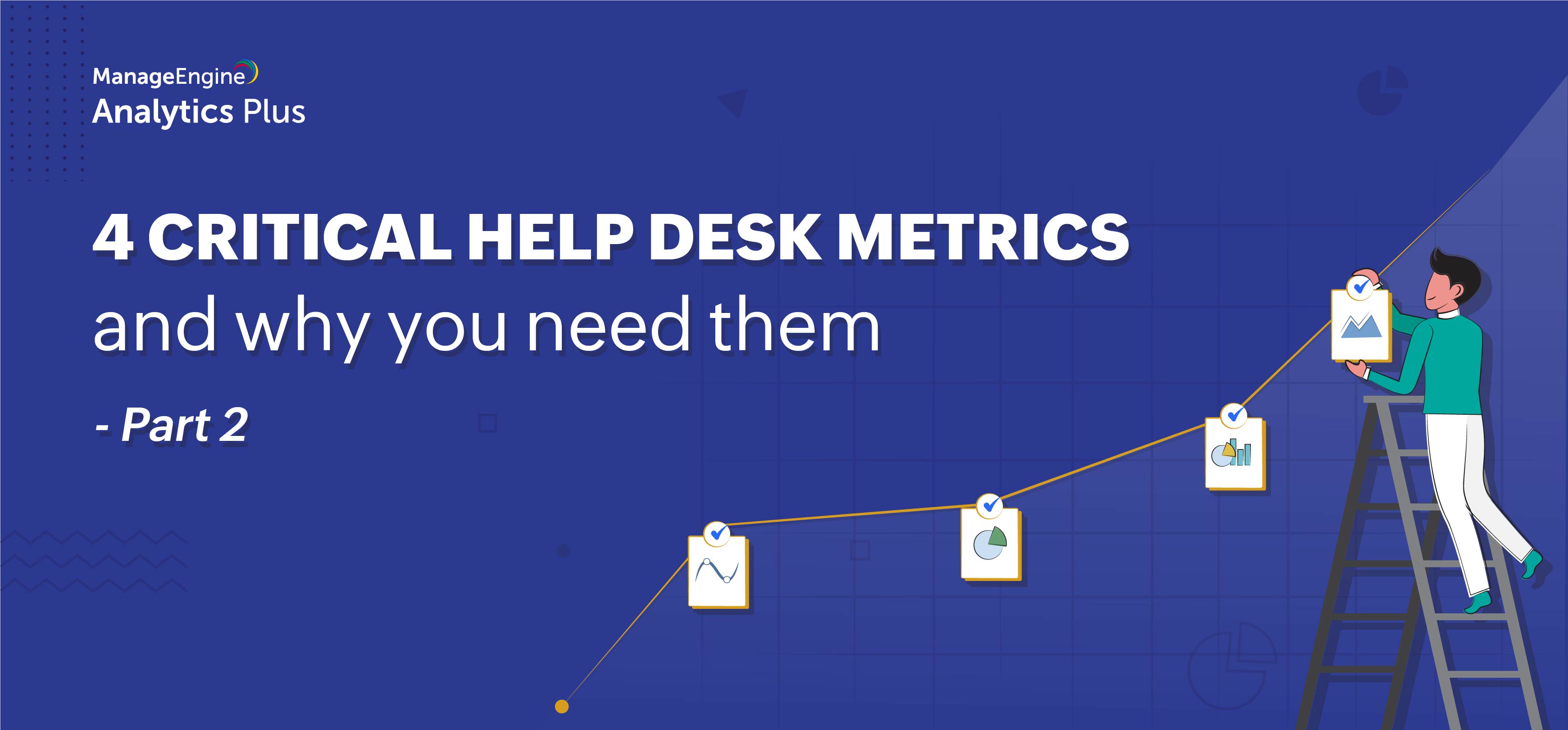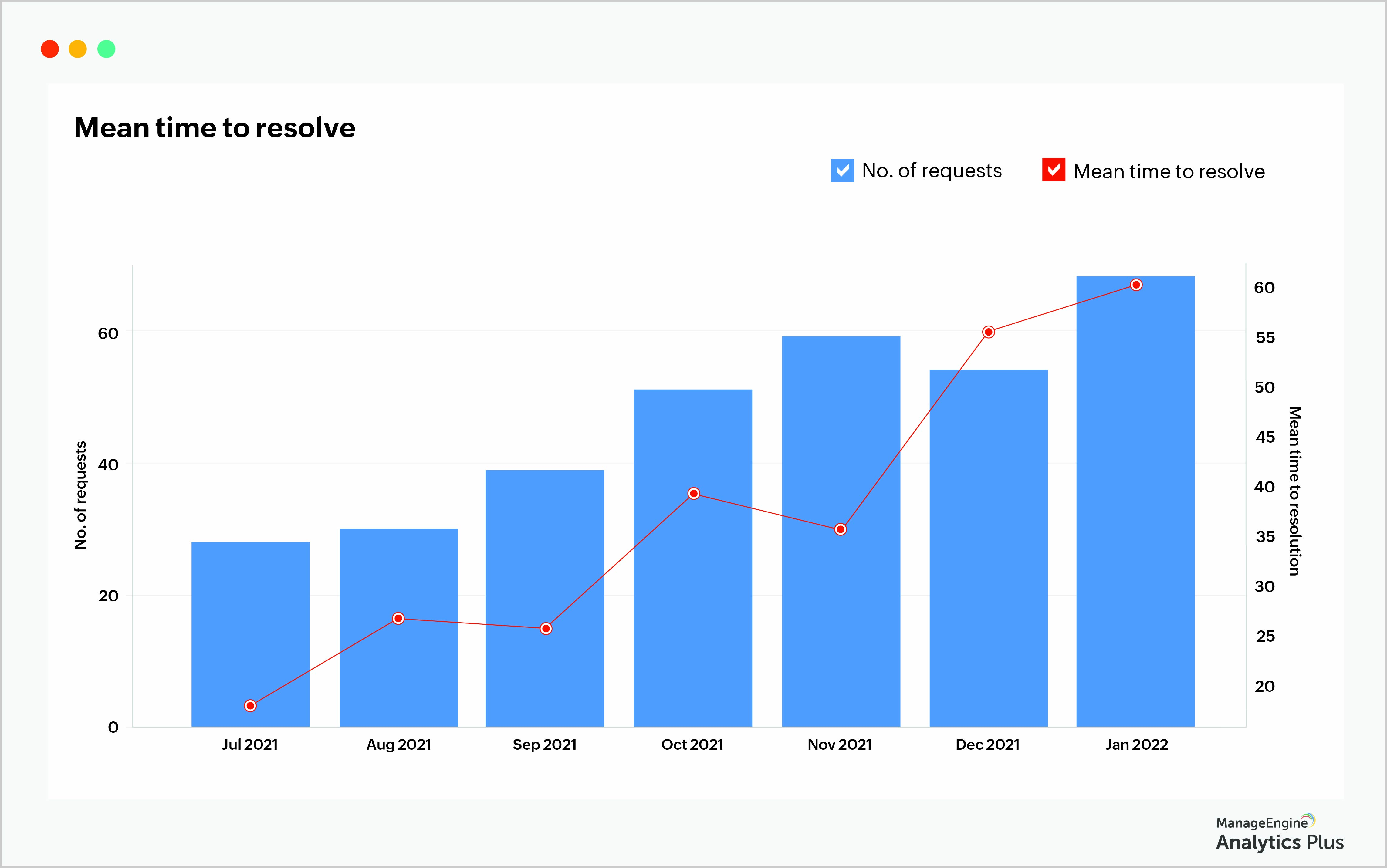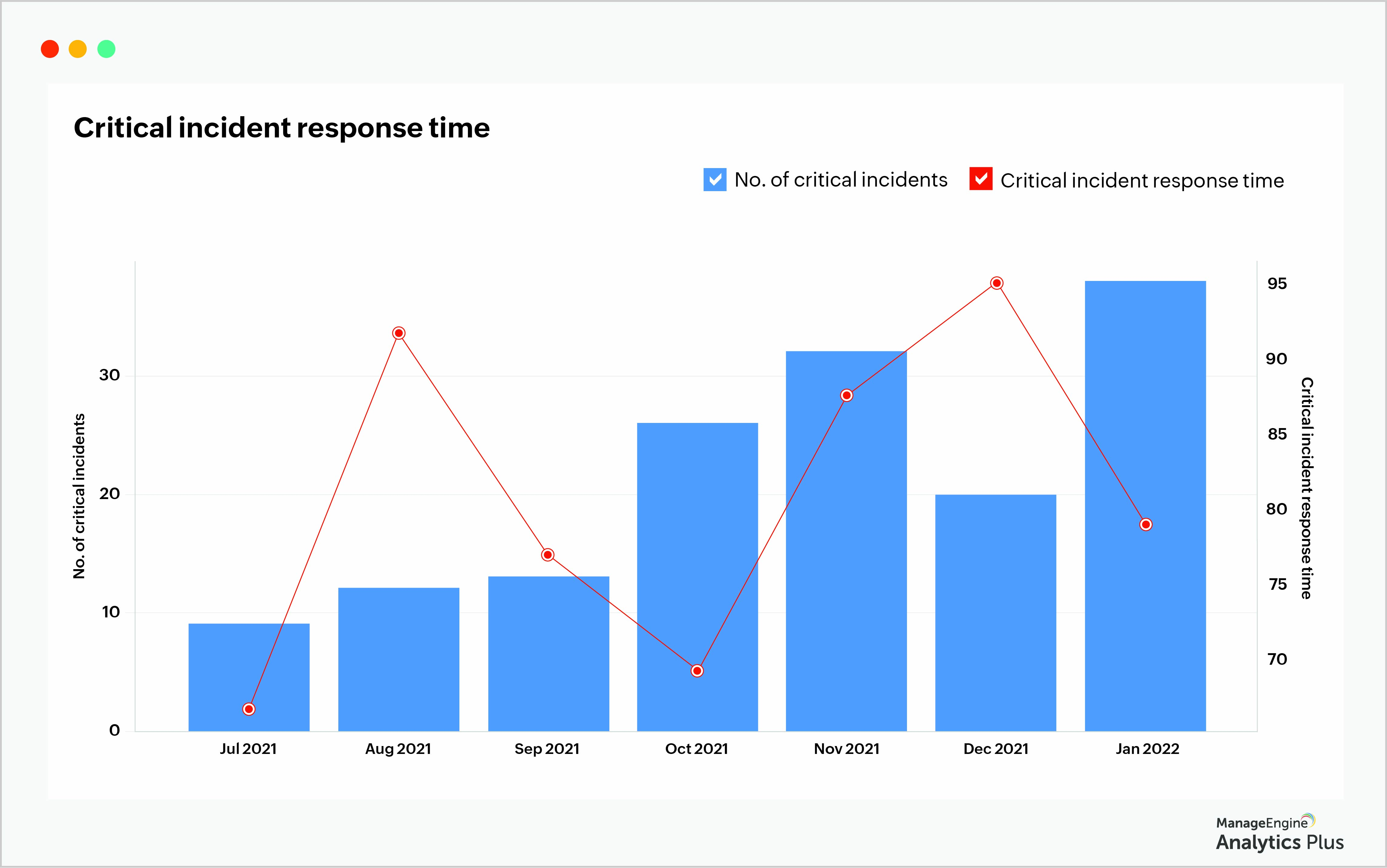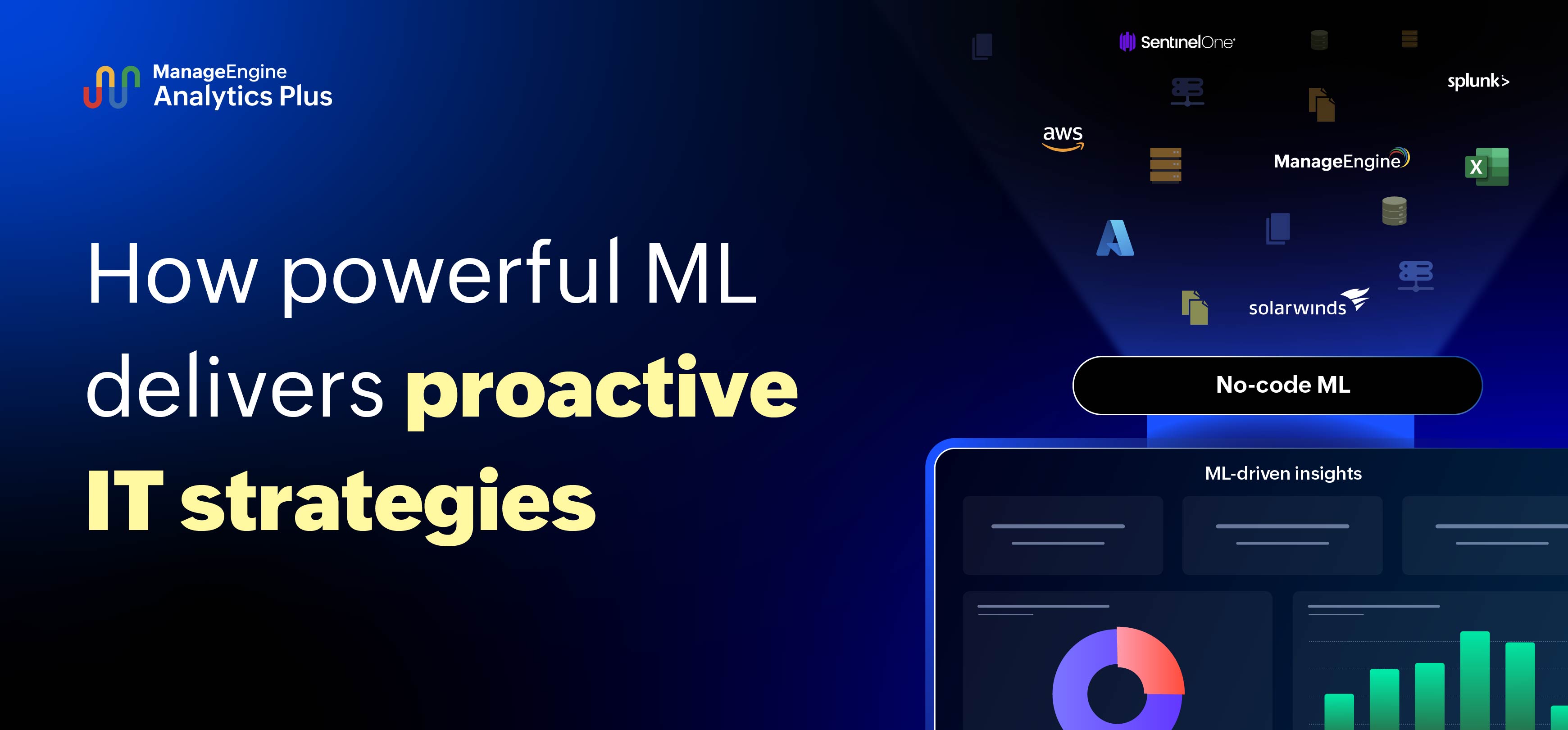- HOME
- ITSM Analytics
- 4 critical help desk metrics and why you need them—Part 2
4 critical help desk metrics and why you need them—Part 2
- Last Updated: July 1, 2024
- 886 Views
- 3 Min Read

In part one of this blog series, we discussed two innovative help desk metrics that play a crucial role in IT help desk management practices. In this blog, we'll discuss additional metrics that can be wielded to streamline overall business operations and significantly lower application outages and downtime.
1. Mean time to resolution
Every IT help desk should have a solid incident management strategy in place that accounts for and addresses every incident that comes its way. Incident management is the core practice that sustains any help desk. Effectively tackling incoming requests ensures your end users get the resolutions they need in a timely manner, thereby avoiding costly SLA breaches and loss in productivity.
A primary metric tracked in incident management strategies is request resolution rates. However, an easier and more effective metric to track instead is overall mean time to resolve (MTTR) rates. Defined as the time taken to resolve an incident in your help desk, MTTR is one of the key drivers of customer satisfaction. It is calculated by dividing the total resolution time by the total number of incidents in your help desk.

While some organizations can boast an MTTR of a meager five hours, others may require 10 hours on average to tackle their incoming requests. This is why it's not advisable to establish industry-wide benchmarks for MTTR due to the varying nature of incidents, technology, assets, and other aspects across different businesses.
However, the lower the MTTR rate in your IT help desk, the better. A higher-than-average MTTR is a good indicator that your resolution processes require some fine-tuning to ensure end users get the help they require in a timely manner. High MTTR values can severely impact customer satisfaction, lead to significant downtime and outages due to delayed resolutions, and even result in losing customers. Encouraging first-call resolutions, gathering all the required information during incident creation, and accurately prioritizing and categorizing incoming requests are all great ways to bring down your overall resolution time.
2. Critical incident response time
To truly master the art of incident management, you can take MTTR a step further and track the critical incidents response time (CIRT). While MTTR deals with the resolution time of every request in a help desk, CIRT measures and tracks the resolution of business-critical incidents.
This facilitates a deeper understanding of process efficiency and help desk performance when dealing with incidents that can cripple your business.

Efficiently dealing with critical incidents will bring you one step closer to a more secure organization with significantly fewer outages and less downtime. To streamline your help desk's response to critical incidents, there are several guidelines you can put in place. You can configure alerts for incidents that have a major impact on business and allocate experienced senior technicians to handle these requests. Accurate identification, categorization, and prioritization of incoming incidents also go a long way in streamlining incident management.
You should also check for the degree of difference between CIRT and MTTR. A high variation between the two could indicate that technicians are overly focused on critical incidents and may be neglecting less critical ones. However, while tracking both MTTR and CIRT metrics, keep an eye on your request reopen rates to ensure technicians are not compromising on the quality of the provided resolutions.
The images used above showcase some of the reports available in Analytics Plus, ManageEngine's IT analytics solution. It offers out-of-the-box integrations with several popular IT applications such as ServiceNow, Jira Software, Zendesk, and ManageEngine's suite of products. If you'd like to create similar reports using your IT data, try Analytics Plus for free.
Ready to learn more about analytics for IT operations? Talk to our experts to discover all the ways you can benefit from deploying analytics in your IT.





